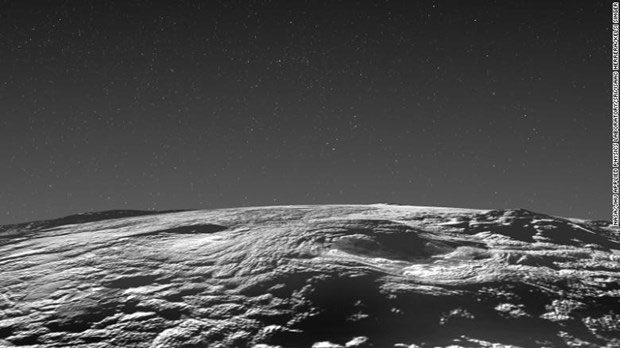Ice volcanoes have been discovered on some of the cold moons in the Solar System, but the ice volcanoes on Pluto appear distinct from all other ice volcanoes previously observed.
A peculiar, undulating terrain on Pluto indicates that ice volcanoes have been active relatively recently on this dwarf planet. This new finding was announced by scientists on March 29.

Surface of Pluto. (Source: CNN).
According to a new study published in the journal Nature Communications, scientists reached this conclusion after analyzing images captured by NASA’s New Horizons spacecraft, which showed that the interior of Pluto is much hotter than previously thought.
Dr. Kelsi Singer, a co-author of the study and a planetary scientist at the Southwest Research Institute in Colorado, stated that instead of erupting lava into the atmosphere, the ice volcanoes release a slushy mixture of ice and water or possibly even a solid flow like a glacier.
Dr. Singer noted that while ice volcanoes have been discovered on some of the cold moons in the Solar System, the ice volcanoes on Pluto appear different from all previously observed ice volcanoes.
What is unique about Pluto is a vast, singular band of very large ice volcanoes, characterized by their distinctive undulating terrain.
Dr. Singer mentioned that it is difficult to pinpoint exactly when these ice volcanoes formed; however, scientists believe it could be a few hundred million years ago or less.
Unlike much of Pluto’s surface, this area lacks impact craters, suggesting that it may still be in the process of formation even today.
Dr. Lynnae Quick, a planetary scientist at NASA’s Goddard Space Flight Center who specializes in ice volcano research, emphasized that these new findings are extremely significant.
They indicate that small celestial bodies like Pluto, which should have lost much of their internal heat long ago, can still retain enough energy to generate extensive geological activity relatively late in the body’s history.
She believes these discoveries will prompt scientists to reassess the potential for liquid water retention on small, icy planets far from the Sun.





















































